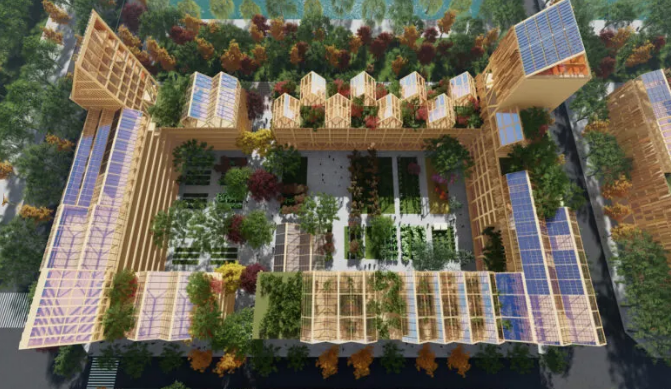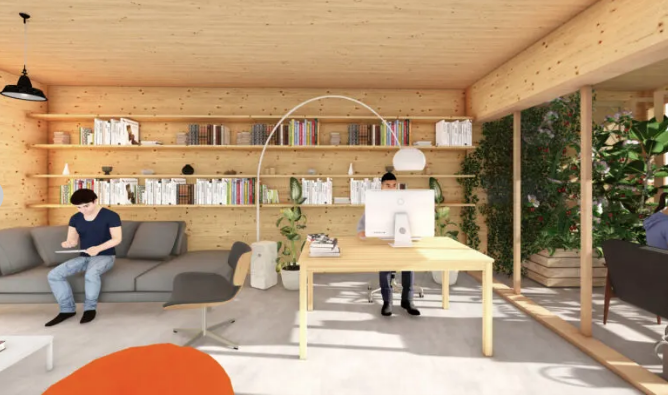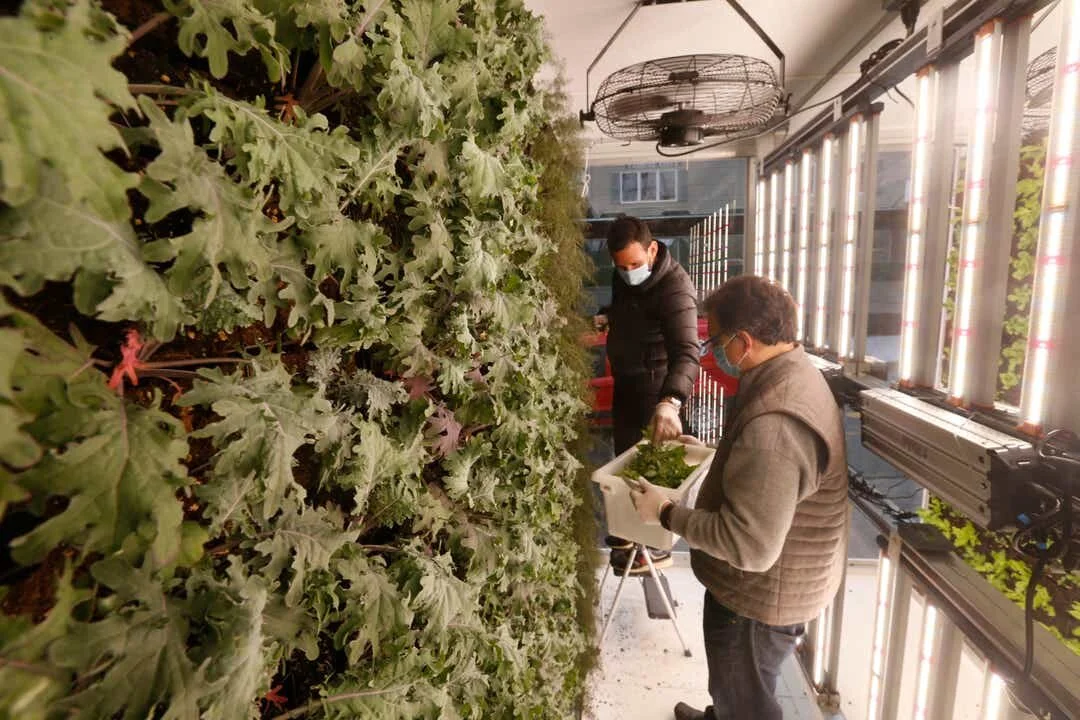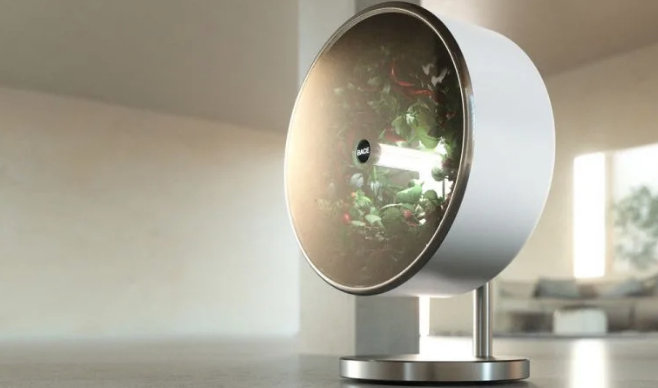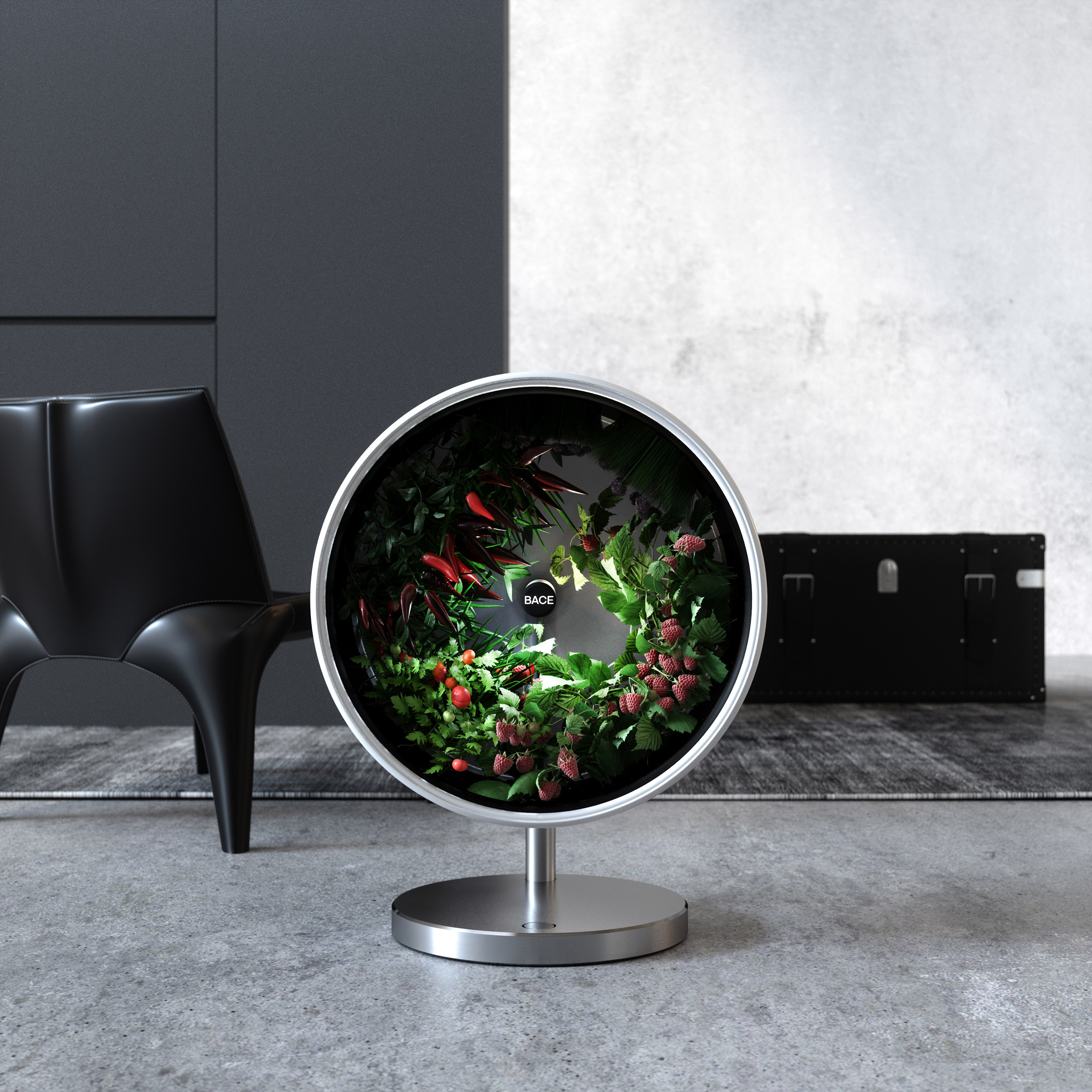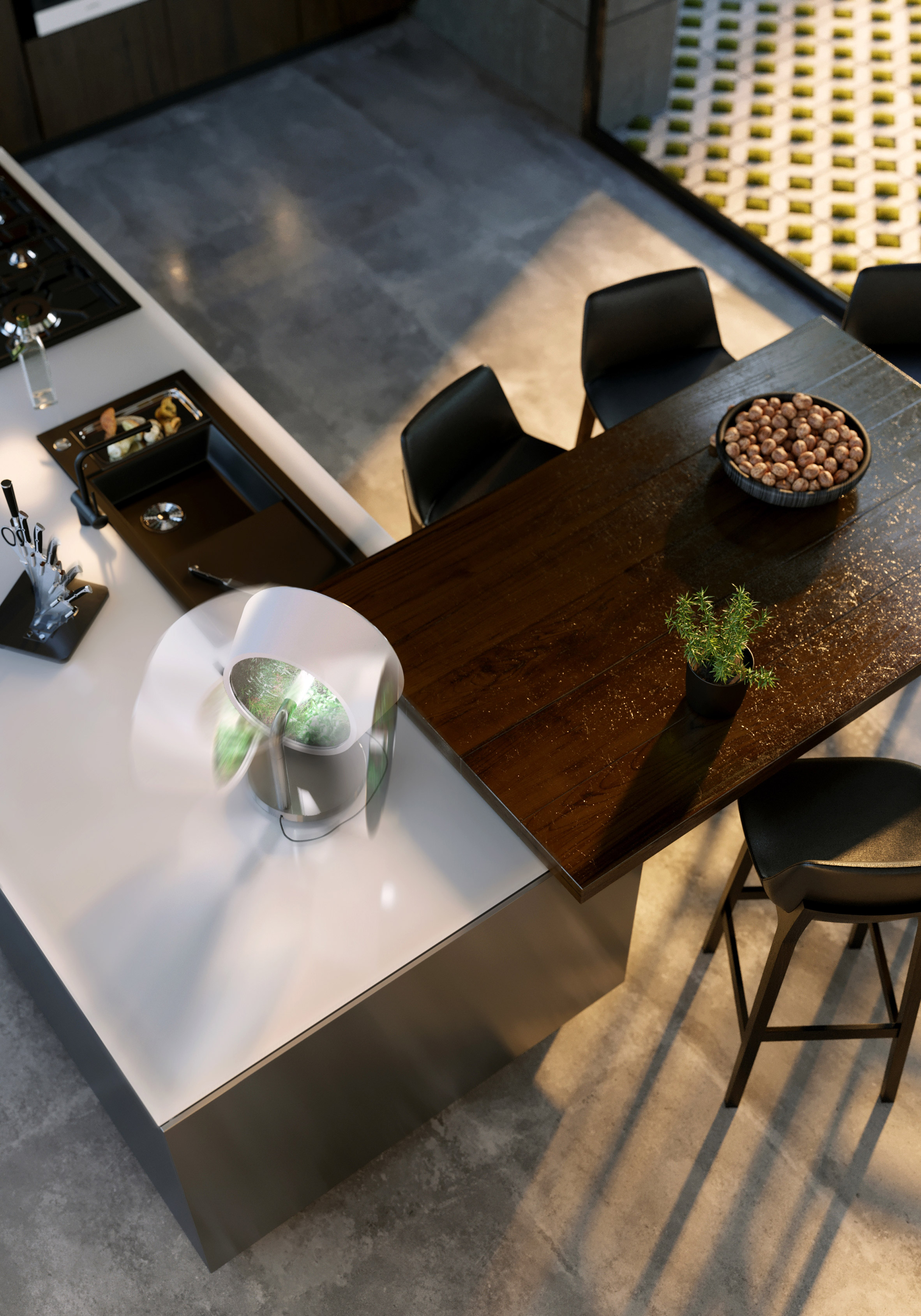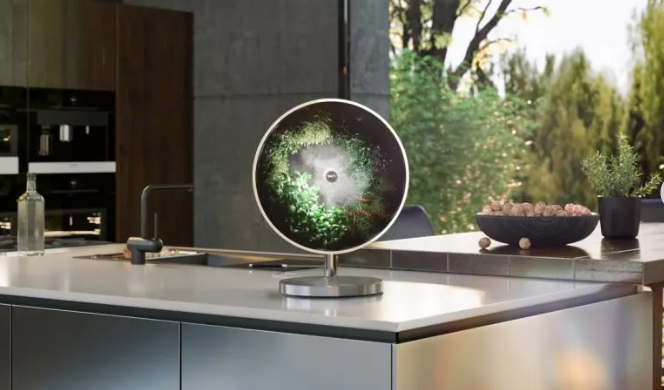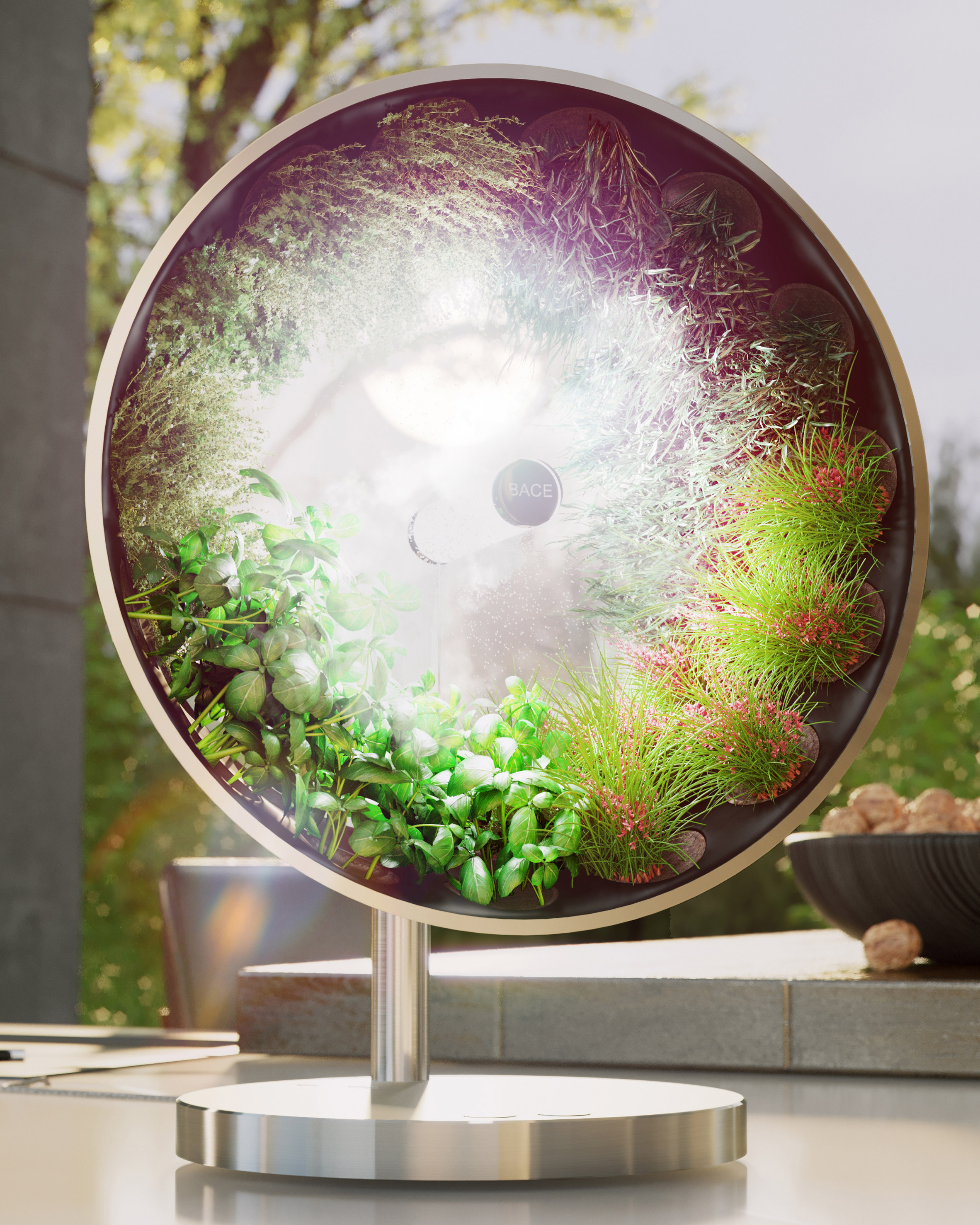
Welcome to iGrow News, Your Source for the World of Indoor Vertical Farming
Up On The Roof, Residents at Allegheny General Hospital Tend Vegetable Garden
Up on the roof of the hospital’s Hemlock Parking Garage, doctors and residents have planted eight raised garden beds as part of an initiative designed to relieve stress for residents and provide food to patients in need.
By Anya Sostek
July 19, 2021
Fresh off a morning seeing patients in clinic, resident Deanna Huffman started her afternoon shift at Allegheny General Hospital with a list of tasks: sweep around the garden beds, prune the tomatoes, harvest the snap peas.
Up on the roof of the hospital’s Hemlock Parking Garage, doctors and residents have planted eight raised garden beds as part of an initiative designed to relieve stress for residents and provide food to patients in need.
“It’s pretty well known that there’s a burnout crisis in medicine, and we’re a residency program, training future doctors,” said Dr. Anastasios Kapetanos, director of the residency program. “It was an opportunity to get our residents outside the building, get some sunlight and some wellness benefits of gardening, and we could tangibly give something back.”
Dr. Kapetanos first proposed the idea in an email in February 2018. From there, it was a two-year journey to find the right spot in the hospital’s North Side campus. A courtyard that was identified — and even leveled during the wintertime — ended up being too shady during the summer. A rooftop that looked promising turned out to need tens of thousands of dollars in reinforcement to work as a garden.
“The chief operating officer would go on like, three, four hour walks with us, just on campus,” said Dr. Kapetanos, describing the search for a plot. “Finally he said, why don’t we go check out the parking garage, and that’s how we ended up here.”
Dr. Deanna Huffman, left, and Divya Venkat and other doctors at Allegheny Health Network harvest vegetables from their garden atop the Hemlock Street parking garage at Allegheny General Hospital on the North Side.(Post-Gazette)
For busy residents, the parking lot ended up being the perfect spot, he said, because they can park their cars on the top floor and check in on the garden as they come and go from work each day. And the vegetables couldn’t be happier.
In late June, residents had already begun to harvest lettuce and kale. Plump sugar snap peas hung from a trellis ready to go.
“It’s thriving even more than our home garden,” said Dr. Kapetanos. “I am so jealous,” added his wife, Dr. Yenny Cabrera-Kapetanos, who is also an internal medicine doctor at Allegheny General Hospital. Dr. Cabrera-Kapetanos was instrumental in developing the garden and planning out the plots, even starting seeds for the garden over the winter at the couple’s house in Cranberry.
Dr. Cabrera-Kapetanos gives a tour of the garden, pointing out zucchini, cherry tomatoes, melons, basil, and edible flowers to bring pollinators up to the top floor of the parking garage.
Dr. Huffman pulls peas and cuts lettuce with scissors, placing it in a bag that will be delivered to the hospital’s Healthy Food Center, which distributes food to patients along with nutrition lessons.
“I’ve seen so many patients who have told me they’ve gotten vegetables from our garden and they’ve been so happy about it,” said Dr. Divya Venkat, a physician with AHN’s Center for Inclusion Health. Dr. Venkat, who grew up gardening with her parents in Las Vegas, started a community garden plot on the North Side when she was a resident at AGH to grow vegetables with other residents.
Dr. Divya Venkat, left, and Dr. Yenny Cabrera-Kapetanos harvest vegetables from their garden atop the Hemlock Street parking garage Monday at Allegheny General Hospital on the North Side.(Post-Gazette)
The garden plot on the parking garage has now been formalized into a curriculum for the residents, where they learn not only about tending the vegetable garden but also about how to talk to patients about diabetes and hypertension.
They are also working with the Healthy Food Center to develop simple recipes to accompany the garden foods, such as a recent one for vegetable chili using garden zucchini.
“The plan is for residents to think of a patient they are taking care of in their own clinic and say, oh, this is a patient who has food insecurity. I would like to bridge that divide,” said Dr. Venkat, “and physically hand them the food that is grown here with an accompanying recipe.”
Other hospitals, such as Boston Medical Center and the Penn State Milton S. Hershey Medical Center, also have vegetable gardens that produce food for patients, although they are not run by residents.
In addition to producing vegetables and educating residents, the garden has had other benefits, helping to develop a new community within the hospital. “Once you start talking about gardening, all the gardeners come out of the woodwork,” said Dr. Kapetanos. “Like there’s a lady that works in cytology. I met her up here last week, and we’re exchanging seeds. She just emailed me and said I have those seeds, and I said, ‘I’ll get you my mom’s tomato seeds from Toronto.’”
Allegheny Health Network doctors, from left, Dr. Deanna Huffman, Dr. Divya Venkat, Dr. Yenny Cabrera-Kapetanos, Dr. Paige Langhals-Totino and Dr. Anastasios Kapetanos pose for a picture near their garden atop the Hemlock Street parking garage at Allegheny General Hospital on the North Side. (Post-Gazette)
And while it wasn’t in the plan when the garden was envisioned in 2018, it also became a sanctuary for doctors and residents during COVID.
“Indoors we were always wearing our masks and shields around the clock and spending long hours and taking care of COVID patients as well, which was very stressful,” said Dr. Cabrera-Kapetanos. “It’s therapeutic, sometimes, just to come and start plucking weeds or pruning some of the plants. It’s nice and quiet up here.”
As COVID intensified in the hospital, Dr. Venkat and other residents could take solace in the garden.
“COVID was so scary because you just watch so much death, right, there’s so much uncertainty,” she said. “I think everyone was pretty scared because no one knew what was going on with COVID, but this is a place that was outside, it was not contaminated, and no matter what, it is always living. It doesn’t matter if it’s raining, if it’s snowing, there’s always life in the garden, and it was a nice thing to have.”
Kimbal Musk’s Quest To Start One Million Gardens
The tech veteran and restaurateur (and brother of Elon) has been preaching the ‘real food’ gospel for years — and his newest project may be his most ambitious yet
MARCH 20, 2021
The tech veteran and restaurateur (and brother of Elon) has been preaching the ‘real food’ gospel for years — and his newest project may be his most ambitious yet
By ALEX MORRIS
Million Gardens Movement
On the day he almost died, Kimbal Musk had food on the brain. The internet startup whiz, restaurateur, and younger brother of Tesla’s Elon had just arrived in Jackson Hole, Wyoming, from a 2010 TED conference where chef Jamie Oliver had spoken about the empowerment that could come from healthy eating. This was something Musk thought about a lot — food’s untapped potential, how he might be a disruptor in the culinary space — but beyond expanding his farm-to-table ethos along with his restaurant empire, Musk hadn’t yet cracked the code. Then he went sailing down a snowy slope on an inner tube going 35 miles an hour and flipped over, snapping his neck. The left side of his body was paralyzed. Doctors told the father of three that he was lucky: Surgery might bring movement back.
“I remember telling myself, ‘It’s all going to be fine,’ and then realizing that tears were streaming down the side of my face,” he says. “I was like, ‘Yeah, OK. I don’t really know what’s going on. I’m just going to, you know, let things go.’”
Musk, 48, eventually made a full recovery, but it involved spending two months on his back, which gave him plenty of time to think about the intersections of food, tech, and philanthropy. Since then, he has launched an initiative to put “learning gardens” in public schools across America (now at 632 schools and counting); courted Generation Z into the farming profession by converting shipping containers into high-tech, data-driven, year-round farms; spoken out vociferously against unethical farming practices and vociferously for the beauty and community of slow food; and this year, on the first day of spring, is kicking off a new campaign with Modern Farmer’s Frank Giustra to create one million at-home gardens in the coming year.
Aimed at reaching low-income families, the Million Gardens Movement was inspired by the pandemic, as both a desire to feel more connected to nature and food insecurity have been at the forefront of so many people’s lives. “We were getting a lot of inquiries about gardening from people that had never gardened before,” says Giustra. “People were looking to garden for a bunch of reasons: to supplement their budget, because there was a lot of financial hardship, to help grow food for other people, or just to cure the boredom that came with the lockdown. To keep people sane, literally keep people sane, they turned to gardening.”
The program offers free garden kits that can be grown indoors or outdoors and will be distributed through schools that Musk’s non-profit, Big Green, has already partnered with. It also offers free curriculum on how to get the garden growing and fresh seeds and materials for the changing growing seasons. “I grew up in the projects when I was young, in what we now call food deserts,” says EVE, one of the many celebrities who have teamed up with the organization to encourage people to pick up a free garden or to donate one. “What I love about this is that it’s not intimidating. Anyone can do this, no matter where you come from, no matter where you live. We are all able to grow something.”
Rolling Stone recently talked with Musk about the Million Gardens Movement, why shipping containers can grow the most perfect basil, and how he is channeling his family’s trademark disruptor drive to change America’s relationship with food.
How did you first get interested in food and then how did that grow into an interest in agricultural innovation?
I’ve always loved food. I started cooking for my family when I was 12, maybe even 11.
What was the first meal you made? Do you remember?
It’s actually funny. My mother is a wonderful person, great dietitian, but because she’s a dietitian, the food we ate was brown bread and yogurt or bean soup. I mean, as a kid, it drove me crazy. So I asked my mom, “If I could cook, could we get something else?” And so I went to the butcher, and I asked them, “How do you roast a chicken?” And he said, “Put it in a really hot oven for one hour.” And I was like, “Oh, how hot is hot?” He was like, “Make it as hot as your oven goes for one hour, and if it starts to burn, then just take it out.” And he gave me the chicken, and that was it. I’ve kept that recipe forever. 450, 500 degrees, one hour. That’s a great straight-up recipe.
And then my mother insisted on a vegetable, so I decided to do French fries, which was my funny way of convincing her that I’m doing a vegetable.
It is a vegetable.
I totally screwed up the French fries. I didn’t heat up the oil ahead of time, and if you don’t do that, the potatoes actually soak in the oil so you’re eating basically a sponge of oil. I made everyone throw up. But the roast chicken was delicious. Everyone loved that. And so I was encouraged to cook more. I cooked for my friends in university. I didn’t have any money, so I figured out how to cook for 40 cents a person. It was a Kraft dinner with weiner sausages. And if someone chipped in an extra dollar, I’d get actually real cheese instead of the powdered cheese.
Anyway, I studied business, and then went down to California to start a company with my brother building maps and door-to-door directions for the internet.
I read that you and your brother were sleeping in your office and showering at the YMCA and that sort of startup lifestyle made you appreciate food.
Yeah, that’s totally right. We only had enough money for rent for either an office or an apartment, so we rented an office. I had a little minibar fridge and put one of those portable cooktops above it, and that was our kitchen. But we also ate at Jack in the Box all the time because it was the only place that was open late. Ugh, 25 years later, I can still remember the items on that menu. It was just really, really not great — a huge inspiration to go focus on real food after that.
And I just did not like the lack of social connection. It’s a work-hard-go-to-sleep-and-work-hard-again culture with not much socializing in the way that I enjoy, which is eating food, eating together over a meal, talking about ideas. I kind of was suffocating a little bit.
It’s a Soylent culture.
Yeah, exactly. They actually want food to be a pill. So I kind of needed to leave. We ended up selling [our company] for a gazillion dollars when I was 27, and I had this sort of opportunity to do whatever I wanted. So I went to New York to enroll at the French Culinary Institute.
Was culinary school as brutal as people make it out to be?
Absolutely brutal. It was Full Metal Jacket, but cooking. They just totally break you down. They make sure you don’t have any faith in your own abilities — within a few months, you’re like, “I am a completely useless fool” — and then after that, they start building you up with the skills they want you to have. It was very, very hard on the ego. I managed to graduate, but I would say 70 percent of the people that start don’t finish — and you pay upfront.
I actually graduated just a few weeks before 9/11 and woke up to the sounds of the plane hitting the building. That’s how close we were. Fourteen days later, I started volunteering to feed the firefighters. We would do 16-hour days, every day — there was never a reason not to work because the alternative is you sit at home during the nightmare after 9/11, where no one was on the streets or anything. I started peeling potatoes and eventually got to the point where I would drive the food down to Ground Zero. The firefighters would come in completely gray in their face and gray in their eyes, covered in dust. And then they’d start eating, and you’d see the color come back in their face, the light in their eyes.
And you worked as a line cook after that?
Yeah, for Hugo Matheson, at his restaurant. He was the chef of a popular restaurant in Boulder, and I just wanted to learn. I was a line cook for $10 an hour for probably 18 months. And loved it. You know, it’s a submarine culture. And you get in there and everything you do in the moment is measured in the moment. It’s very much the opposite of [building] software.
You and Hugo eventually started a restaurant [The Kitchen] that practiced the farm-to-table thing before it was even really a term. Why was it so important to you to have local suppliers and organic methods? At that point, was it mainly about flavor, or was there a bigger ethic behind it?
For sure flavor was the driver. But I think that the thing that I resonated with more was the sense of this concept of community through food. You know, when I was feeding the firefighters, it was all about community. The fishermen would come and give us their fish, so we got the best fish you can imagine. The cooks were all volunteers. We were going through this really tough time. So for me, the community through food was what I loved about it.
[At The Kitchen], we literally had a basic rule to farmers saying we’ll buy whatever you grow. We said that if you can deliver by 4 p.m., then we will get it on the menu that evening.
Oh, wow.
We would get fiddlehead ferns at 4 p.m. and be trying to think, “OK, what can we do with this?” If you turn the food around that quickly, it really does show up in the flavor.
Food that had potentially been in the ground that morning.
Not potentially. Every day was working with the harvest of that day. We had 43 different farmers coming to the back door. It was awesome.
Let’s move ahead to the part of the story, after your accident, when you’re like, “All right, I’ve gotten this new lease on life and now what am I going to do with it?” Obviously, within the food space, there are a lot of choices you could have made. So how did you decide where to go from there?
So when I came out of that hospital, I resigned as CEO of my software company. I told my wife I wanted a divorce. The spiritual message I got was: Work with a way to connect kids to real food, to get kids to understand what real food is. And real food for me is food that you trust to nourish the body, trust to nourish the farmer, trust to nourish the planet. It’s very simple. Processed food would be the opposite of that. There’s no nourishment there. The farmer gets hosed and it’s terrible for the planet. So I [looked into] farm-oriented work and cooking-skills training. Turned out giving kids knives isn’t a good idea.
What? [laughter]
Yeah. Exactly. But the thing that came back to me was the value of a school garden. I actually was pretty frustrated with school gardens. I had been a philanthropic supporter of them for a few years and found them to be expensive, hard to maintain — a passionate parent would put it in, and then their kid would graduate, and it would become this mess in the corner of the schoolyard. So we [created] learning gardens. They’ve got a beautiful Fibonacci sequence layout. They’re made in a factory, but they have a natural look and feel. These are totally food-safe and can go on any school ground. They’re [wheelchair] accessible, easy to teach in, and built into the irrigation system of the school. We go in and we do 100 of them at a time. Pre-COVID we got to almost 700 schools in Denver, Chicago, Detroit, Pittsburgh, Indianapolis, Memphis, L.A.
How did you decide which cities to go into?
I believe this is useful anywhere, but what I found was low-income communities were the areas where you really needed it. Private schools or wealthier schools, they all have gardens — there’s not a private school out there that doesn’t embrace having a school garden. It’s actually the low-income schools that don’t have it. And that is also, coincidentally or not, where the obesity is. And so what I wanted to do is take what existed in private schools and put it into low-income schools and to do it in a way where it would be the most beautiful thing in the school. So instead of that sort of eyesore that was in the backyard, we said, “These have to be right next to the classroom, right next to the playground. You’re not allowed to build a fence around it. And if you don’t want to do that, great, we’ll just find another school. But these are the rules for learning garden.” And because we were doing 100 at a time, the districts would work with us, including maintenance and installation and curriculum and teacher training. Pre-COVID we were teaching almost 350,000 kids every school day.
And are there measurable effects?
Absolutely. Studies show that fifth grade in particular is the most effective grade. If you teach science in fifth grade to a kid, the exact same lesson in the garden versus in the classroom, you will get a 15-point increase on a 100-point score on their test scores.
And then if you teach kids 90 minutes a week in school, which is not hard to do because it’s beautiful and fun to be outside, you’ll double their intake of fruits and vegetables. Now they’re not eating a lot of fruits and vegetables, so the base is low, but you’re still doubling. The way I like to look at it is you’re really not trying to make them eat vegetables all the time — that’s too hard — you just try to change the course of their life by a few degrees; if you can do it by third, fourth, fifth grade, they’re going to be a different adult when they grow up. We’re not here to claim that what we do changes everything. We believe that the cafeteria needs to improve, that we need grocery stores to exist in these food deserts. There are many legs of the stool, but the school garden movement is a critical leg.
Are there any other technological innovations in this space that are really giving you hope?
I think there’s a lot of cool things going on around carbon capture with regenerative farming, because if you do farming correctly, you’ve become a wonderful carbon sink. And there needs to be an economy around it. So what is the value of a carbon credit? They’ve got value for that in Europe, but they haven’t valued it in America. So I think there’s a lot of government policy that needs to work there. But it’s a fascinating area to look at.
It’s interesting, the concept of bringing innovation to agriculture, which is—
So old school! Yeah, it’s fun. I do get frustrated that it doesn’t move fast enough. Then I’m reminded of how big this is and I’ve got my whole life to work on it. So I’m learning to embrace going a little slower. If you are in the software world, it’s more “move fast and break things,” and I think with food, it’s something in between.
Yeah, you don’t want to break the food chain.
No, people need to eat. Exactly.
And I know you’ve been advocating, too, for policies that help farmers shift to organic methods.
Yeah, I’ve been a supporter of that, but I really have pushed my energy now to work with young farmers of any kind. I’m not against organic at all. I love organic. But I’ve kind of said, “You know, we just need young farmers.” Real food doesn’t require it to be organic. If it’s a zucchini that happens to be grown conventionally, I’m still in favor of that.
It’s still a zucchini.
Right. That being said, organic is better. Farmers make more money on it. But it’s really about young farmers getting them into the business.
If you don’t mind, let me take one minute to just talk about [another initiative called] Square Roots. So there was a sort of a turning point in indoor farming technology around 2014, where you could really do quality food. Indoor farming’s been around forever, but the quality was really terrible. It would taste like water. No real flavor. But the technology of lighting really changed in 2014, and so by 2016 we said, “You know, there is a way here.” And what got me going was I really wanted to create this generation of young farmers. I love technology and I love food. And I think that if we bring the two together, we will get young people interested in farming again. And so we started out Square Roots as really a training entity.
And with Square Roots, you’re growing food in shipping containers? There’s no soil?
Yeah, we refine the nutrients [through the water]. We’ve gotten very, very thoughtful about what the nutrients are so that we can re-create as best we can the soil that they would get normally. The shipping containers, what’s beautiful about them is the fact that we can totally control the climate. For example, we have found that Genoa in Italy is where the best basil in the world is grown. It’s four weeks in June that are the best, and actually, 1997 was the best June. And so we re-create the climate of 1997 Genoa, Italy, in each of those containers to create the tastiest basil you can possibly imagine. Using data, we can monitor the growth and how they work. And every square meter of the air in there is exactly the same. That’s why containers are so valuable. Plants factories have to grow basil or cilantro or whatever all in the same climate. We get to grow arugula, basil, parsley, cilantro or whatever each in their own climate. For example, we’ve discovered that mint grows best in the Yucatan Peninsula — superhuman, grows like a weed, delicious. And we re-create that climate.
Square Roots Basil Farm in Brooklyn.
Square Roots
And the shipping containers, the idea for that was, “Let’s use things that we can recycle”?
Well, they are recycled. But no, it wasn’t that. It was actually climate control. They’re actually like refrigerators. We can drop that temperature in there to 40 degrees Fahrenheit for a particular growth cycle. If we have any pests, we don’t use pesticides, we have something called Mojave mode where we turn it into the Mojave Desert for four days. We bring the temperature up to 120 degrees, drop the humidity down to four percent and nothing can survive. That’s how we remove pests. No one else can do that unless you use these kind of containers. So it’s really a technology solution.
You’ve referred to food as being the new Internet. Do you still feel that way?
Oh, my god. Absolutely. It’s showing itself. Food is different to social media and so forth. It takes a long time to build up supply chains, get consistent growing. It’s not as fast-moving, but it is a much bigger business. Software is a $400 billion business. Food is an $18 trillion business. So the opportunity is much, much bigger in food than it is in software.
What are the top two or three things that really bother you about the industrial food system right now?
The processing of food. For some reason back in the ’70s, America just started to idolize processed food. And so what you have is a high-calorie hamburger, for example, that is nutritionally irrelevant. In other words, people were just not thinking about nutrition. And they used laboratories to adjust the flavor, chemicals to adjust the flavor, artificial ingredients. The result was a very high-calorie, highly processed kind of a Frankenstein burger that did please the pallet, but it made you feel awful afterwards.
The other one that is absolutely ludicrous is ethanol. Forty percent of our corn fields are growing ethanol. That’s 25 million acres of land that could be used to grow real food. People keep feeding us bullshit that we need to try and feed the world. We have so much food that we are turning 40 percent of it into ethanol. It takes a gallon of oil to make a gallon of ethanol. So it’s just a total boondoggle for the corn farmers and it’s terrible for the environment. In fact, it’s hilarious: It’s the only thing that both the oil industry and the environmentalists hate. Can you imagine there’s something that those two can agree on? And it’s ethanol.
Why the hell are we doing it?
It’s a subsidy for farmers. We do it because old people vote, and they control the farms, and they would all be devastated right now if the true demand of corn is what they had to deal with. And until a politician has the courage to make those hard decisions, we’re going to be stuck growing ethanol. Now, the good thing is we are all switching to electric cars, so ethanol is going to go away anyway. But for a while, the next five to 10 years, ethanol is going to be a part of what we do.
Let’s talk about the Million Gardens Movement. How did you get the idea that you wanted to do it?
Frank [Giustra] and his team pitched us on joining forces and doing the Million Gardens Movement. And we loved it. We thought it was a great idea. Because of Covid, we had been forced to pivot our model from the learning gardens because we couldn’t really teach people in the gardens anymore. And so we had done this trial of what we call little green gardens, which are round, beautiful sort of beige sacks, and you can come in and pick these up from a local school in your community. You can grow them on a windowsill as long as there’s some light. You can grow them indoors, which enables any city to be able to use them.
Say you get to a million gardens, are there any projections on what the environmental impact of that might be?
What we would be doing with these little green gardens is inspiring people to garden and empowering them to garden. The average garden generates about $600 to $700 worth of food a year. So it provides actual food to your family. You’re having a lower carbon footprint because you’re not shipping food around. It’s great for mental health. Think about Covid and how crazy we all are. This gets you out there. It connects you to your kids. Gardening is such a beautiful thing to do for yourself, for the community, for the environment.
It’s easy to think about what has been lost during this time, but I do like this idea of using COVID as an opportunity for change.
It’s obviously one of the worst things we’ve gone through as a society, but if we do this correctly, if we take this opportunity well, it could be one of the best things that’s happened to society — in a few years, we’ll look back and say, “OK, this was a good way to restart and focus more on climate change, focus more on gardening with your family, being connected to each other.” I think it has a lot of potential, as long as we take that potential and we leverage it. So the Million Gardens Movement is a part of that.
This Sustainable Neighborhood of The Future Is Designed To Manage Both Climate Change And Pandemics
A proposal for a new city in China is designed to be as green as possible—and also makes it easy to isolate in the case of another outbreak
09-04-20
A proposal for a new city in China is designed to be as green as possible—and also makes it easy to isolate in the case of another outbreak.
[Image: courtesy Guallart Architects]
Eighty miles southwest of Beijing, the Chinese government is planning a new five-million person city as a model of sustainability—powered by clean energy, featuring huge green spaces, and unsullied by many cars. A new design shows what neighborhoods in the city, called Xiong’an New Area, might look like.
City blocks would surround courtyards with native plants and garden plots. Apartments, designed for people of all income levels and ages, have large balconies with built-in boxes for gardening; greenhouses with vertical farms sit on the roofs, next to rooftop homes with gardens of their own. The wooden buildings, designed to use 80% less energy than typical buildings, use on-site solar power. Most streets are designed to prioritize people on bikes and on foot, not cars.
Read More Here
Urban Farming: Four Reasons It Should Flourish Post-Pandemic
Since lockdown, public interest in growing fruit and vegetables at home has soared. Seed packets are flying off shelves and allotment waiting lists are swelling, with one council receiving a 300% increase in applications
Since lockdown, public interest in growing fruit and vegetables at home has soared. Seed packets are flying off shelves and allotment waiting lists are swelling, with one council receiving a 300% increase in applications. Fear of food shortages will have motivated some, but others with more time on their hands at home will have been tempted by the chance to relieve stress doing a wholesome family activity.
The seeds of enthusiasm for home-grown food may have been sown, but sustaining this is essential. Urban farming has much to offer in the wake of the pandemic. It could help communities boost the resilience of their fresh fruit and vegetable supplies, improve the health of residents and help them lead more sustainable lifestyles.
Here are four reasons why food growing should become a perennial feature in our gardens, towns and cities after COVID-19.
1. Growing greener towns and cities
More than half of the global population lives in urban areas, and this is expected to rise to 68% by 2050. For the UK, this is even higher – nine out of 10 people are expected to live in towns and cities by this time.
Weaving food growing into the fabric of urban life could bring greenery and wildlife closer to home. The COVID-19 lockdown helped reawaken interest in growing at home, but one in eight UK households have no access to a garden. Thankfully, the opportunities for urban farming extend beyond these: rooftops, walls – and even underground spaces, such as abandoned tunnels or air raid shelters, offer a range of options for expanding food production in cities while creatively redeveloping the urban environment.
Edible rooftops, walls, and verges can also help reduce flood risk, provide natural cooling for buildings and streets, and help reduce air pollution.
Paris hosts the largest urban rooftop farm in Europe. EPA-EFE/Mohammed Badra
2. Resilient food supplies
Diversifying where and how we grow our food helps spread the risk of disruption to food supplies.
The UK’s reliance on imports has been growing in recent decades. Currently, 84% of fruit and 46% of vegetables consumed in the UK are imported. Brexit and COVID-19 could threaten the steady supply, while the problems created by climate change, such as water scarcity, risk disrupting imports of food from abroad.
Growing fruit and vegetables in towns and cities would help resist these shocks. The harvest labour shortages seen during the pandemic might not have been felt as keenly if urban farms were growing food right where people live.
Vertical and underground crops are more resilient to extreme weather or pests, indoor growing environments are easier to control than those in the field, and temperature and humidity is more stable underground. The high start-up costs and energy bills for this type of farming has meant that indoor farms currently produce a small number of high-value crops, such as leafy greens and herbs. But as the technology matures, the diversity of produce grown indoors will expand.
À lire aussi : Vertical farms offer a bright future for hungry cities
3. Healthier lives
Getting out into nature and gardening can improve your mental health and physical fitness. Our research suggests that getting involved in urban food growing, or just being exposed to it in our daily lives, may also lead to healthier diets.
Urban growers may be driven to make healthier food choices for a whole range of reasons. They have greater access to fresh fruit and vegetables and getting outdoors and into nature can help reduce stress, making people less likely to make unhealthy food choices. Our study suggested that urban food growing can also help change attitudes towards food, so that people place more value in produce that’s sustainable, healthy, and ethically sourced.
4. Healthier ecosystems
While urbanization is regarded as one of the biggest threats to biodiversity, growing food in towns and cities has been shown to boost the abundance and diversity of wildlife, as well as protect their habitats.
A recent study found that community gardens and allotments act as hotspots for pollinating insects, because they tend to contain a diverse range of fruiting and native plants.
Vegetables, like this courgette, can produce flowers for pollinators to enjoy. Natakim/Shutterstock
If designed and implemented properly, allotments and community gardens can really benefit biodiversity. Not only should barren spaces be converted into green and productive plots, it’s also important that there are connections between these environments to help wildlife move between them.
Canals and cycle paths can act as these wildlife corridors. As we begin to diversify the spaces used to grow food, particularly those on our rooftops and underground, an exciting challenge will be finding novel ways of connecting them for wildlife. Green bridges have been shown to help wildlife cross busy roads – perhaps similar crossings could link rooftop gardens.
All these reasons and more should compel us to scale up food production in towns in cities. COVID-19 has given us cause to reevaluate how important local urban green spaces are to us, and what we want from our high streets, parks, and pavements. Judging by the garden center sales, allotment lists, and social media, many people have decided they want more fruit and veggies in those spaces. The opportunity is there for urban planners and developers to consider what bringing farming to urban landscapes could offer.
Lead photo: Joshua Resnick/Shutterstock
Déclaration d’intérêts
Senior Research Associate in Physical Geography, Lancaster University
Does not work for, consult, own shares in or receive funding from any company or organization that would benefit from this article, and has disclosed no relevant affiliations beyond their academic appointment.
Chair Professor in Sustainability, Lancaster University
Receives funding from the UK Research and Innovation Council and the European Commission. The research described here was funded under the Global Food Security’s ‘Resilience of the UK Food System Programme’, with support from BBSRC, ESRC, NERC, and The Scottish Government (BB/S01425X/1).
Precht's The Farmhouse Concept Combines Modular Homes With Vertical Farms
Architecture studio Precht has developed a concept for modular housing where residents produce their own food in vertical farms.
Architecture studio Precht has developed a concept for modular housing where residents produce their own food in vertical farms.
Architects Fei and Chris Precht, who is also the co-founder of architecture studio of Penda, developed The Farmhouse as a way to reconnect people in cities with agriculture and help them live in a more sustainable way.
Precht designed The Farmhouse as populations around the world are increasingly becoming city dwellers who have lost touch with how their food is produced, while food transportation has an increasingly damaging effect on the environment.
The conceptual modular system would allow people to grow food in residential tower blocks to eat or share with their local community.
"I think we miss this physical and mental connection with nature and this project could be a catalyst to reconnect ourselves with the life-cycle of our environment," said Chris Precht.
Prefabricated A-frame housing modules made from cross-laminated timber (CLT) would be stacked to provide flexible living spaces.
CLT is more sustainable than other low-cost building materials such as concrete because it locks in the carbon absorbed by the trees that were grown to make it.
Each of the module's wall would be made of three layers. An inner layer, facing the home interior, would hold the electricity and pipes with the surface finishes.
A layer of structure and insulation would form the middle layer, and on the outside layer would hold all the gardening elements and a water supply.
Different modules would have different types of external systems, such as hydroponic units for growing without soil, waste management systems, or solar panels to harness sustainable electricity.
Single-family users would be able to build their own homes using as many modules as they chose, or taller housing blocks could be formed by arranging the A-frames into stacked duplexes.
Each duplex would have an open plan living and kitchen space on the ground floor, with tent-shaped bedrooms on the upper floors. On the outer edges of the tower residences could have balconies.
Growing gardens would be arranged so they are either private or communal, with the inverted gaps left between modules providing V-shaped buffer zones between apartments and giving the plants natural light and ventilation.
The smallest living configuration available is just nine square metres with a 2.5-square-metre balcony. Hypothetically, Precht said, the tower could be built as tall as a city would allow.
"The system doesn't limit the height of the tower, because it is adaptable to a different thickness of structure," Chris Precht told Dezeen.
"But national regulations can limit the use of wood. In some countries like Japan, Canada, Scandinavia, Austria, UK, you can construct 18 to 30 stories and building codes around the globe are adapting fast to the use of CLT."
An indoor food market would be located on the ground floor of the tower, along with a root cellar for storing food in winter and composting units for turning food waste back into growing material.
The Prechts were motivated to design The Farmhouse system by their own experience. Two years ago they relocated from central Beijing to the mountains of Austria, where they grow their own food.
"Our motivation for The Farmhouse is personal," said Fei Precht.
"We live and work now off the grid and try to be as self-sufficient as somehow possible. We grow most of the food ourselves and get the rest from neighbouring farmers," she continued.
"We have now a very different relation to food. We are aware that this lifestyle is not an option for everyone, so we try to develop projects, that brings food back to cities."
Working as Penda, Chris Precht worked on the design of a hypothetical CLT tower for Toronto with tree-covered balconies, and a concept for a house in Germany with an interlocking green roof.
Renderings courtesy of Precht.
India Block | Dezeen | February 22, 2019
CEA Success Story About Small Family Farms Using CEA Technologies To Feed Their Local Communities
To learn more about Snuck Farm and what they're up to, check out their website and instagram. If you’re near Pleasant Grove, Utah, consider visiting their Farm Stand or ordering a Snuck Share!
To learn more about Snuck Farm and what they're up to, check out their website and instagram. If you’re near Pleasant Grove, Utah, consider visiting their Farm Stand or ordering a Snuck Share!
Would you like to be featured in a Grower's Highlight, or do you know someone who would be a good fit? Let us know!
US - TEXAS - 5 Reasons To Try Foodscaping Your Lawn
For many Texans tired of driving to the grocery store for their weekly produce, foodscaping is becoming an increasingly attractive alternative. Instead of a yard full of grass, foodscaping is a landscaping technique that covers all usable space with an arrangement of plants that can be eaten
July 1, 2020, By Jenna Careri
For many Texans tired of driving to the grocery store for their weekly produce, foodscaping is becoming an increasingly attractive alternative. Instead of a yard full of grass, foodscaping is a landscaping technique that covers all usable space with an arrangement of plants that can be eaten.
If you own a home, there’s a good chance you have some form of landscaping in your yard, whether it’s shady trees or blooming flowers. But combining your landscaping with foodscapes could provide a visually appealing yard that also produces meals – and will help you cut back on your gas and grocery bills. Without further ado, here are four reasons to give it a go.
1. Fresh produce without a trip to the store.
Foodscaping offers an ultra-convenient alternative to going to the grocery store to buy produce. Instead, fresh produce is just steps from your kitchen. Foodscaping also gives you control over the quality of the food you eat. You’ll have organic, pesticide-free food at your fingertips every day!
2. Reduce your carbon footprint.
Speaking of cutting out trips to the grocery store, foodscaping can help you cut back on your carbon footprint! Fewer trips to the store mean you can avoid the carbon emissions from your car, as well as the emissions from shipping produce across the country to the supermarket. Most of the fruits and veggies at the grocery store travel hundreds of miles in inefficient refrigerated trucks that are environmentally taxing.
3. Cut down on your gas and grocery bills.
Reducing the number of trips you take in your car means you’ll save money on gas. However, foodscaping can also help you save on your grocery bills. The upfront cost is roughly equivalent to landscaping with trees, shrubs, and sod. But over time, edible plants can pay for themselves. The fresh fruits and vegetables harvested from your yard year after year can save you a bundle on groceries. Some have claimed to save more than $1,000 a year by dedicating some yard space to food.
4. Save time and energy with low-maintenance plants.
It may seem like an edible yard is a huge time commitment, but it doesn’t have to be. If you choose hearty plants that are native to your area, they will grow easily with little effort on your part.
In hot climates, such as Texas, look for plants that require little water. Beans, spinach, tomatoes, cabbage, and broccoli do well in drought-like conditions.
In humid conditions, such as those found in Florida or Hawaii, try your hand at tropical fruits such as pineapple, bananas, and mangos.
For colder climates without frost, plant blueberries, strawberries, melons, and rhubarb that will add color to your yard. Plenty of tree varieties do well in this type of climate as well, so you can enjoy fresh cherries, plums, olives, and almonds.
In the extreme cold, you’ll want to grow hardy plants that can withstand the cold. Broccoli, cabbage, carrots, peas, radishes, and chard do well in cold climates. There are also many berries, nuts, and fruits that can survive the bitter cold.
5. Find a creative outlet.
Especially during the ongoing COVID-19 pandemic, many have turned to gardening as a creative outlet while they are working from home. Foodscaping can help you avoid extra trips to the grocery store, and you may find maintaining your yard can become a calming and enjoyable hobby rather than a chore.
Gardening During Coronavirus: How Going Vertical Can Save Space, Move Plants Indoors
Vertical Field, an international company based in Israel, produces soil-based farms that have their own light source
Heather Clark Poughkeepsie Journal
May 2, 2020
During the coronavirus pandemic, in which much of the country is sheltering in place, gardening is growing in popularity as a hobby, not to mention a reliable resource for fresh produce.
For many, growing vegetables and herbs has provided peace of mind and relieves the anxiety around such questions as "where does this come from?" or "who's touched this?"
But one big question for some remains: What do you do if you don't have the space to make an in-the-ground-garden?
That's where vertical gardens come in.
Vertical gardens bring the plants off the ground. They are available in a variety of shapes, sizes and methods. Some use soil, others only water and air.
From left, Vertical Field U.S. launch manager Sam Miner and Chef John Lekic, owner of Farmers and Chefs restaurant, food trucks and catering harvest their first batch of herbs and vegetables on April 29, 2020.
Patrick Oehler/Poughkeepsie Journal
Bellefield hires head of agriculture, plans to reduce waste, optimize agricultural space
Dutchess restaurants fight to remain open as losses mount
Orchards in Hudson Valley optimistic for sweet 2020 crop
Fresh, green from the soil
Vertical Field, an international company based in Israel, produces soil-based farms that have their own light source. According to Sam Miner, Vertical Field U.S Launch Manager, the system is designed so its operators can pick and choose what plants go into the garden depending on the menu.
"Essentially within 30 days, someone can have planted plants and be preparing for harvest," Miner said. "The idea is that grocery stores, hotels, restaurants, chefs, nursing homes, and even communities can have these and can become self-sustainable."
In Poughkeepsie, John Lekic, chef and owner of Farmers and Chefs restaurant, recently had a Vertical Field system installed for his restaurant.
"Visually, it's amazing," said Lekic, who also does catering and has food trucks. "I'm really looking forward to the day we can really reopen and customers can experience it."
At Farmers and Chefs, Lekic has grown lettuce, baby kale, brown fennel, basil on the Vertical Field system — and that's just half of their container. Lekic said having the ability to take the vegetable from the farm directly to the customer is a very wholesome experience.
Vegetables grow in the indoor vertical garden at Farmers and Chefs restaurant in the City of Poughkeepsie on April 29, 2020. Patrick Oehler/Poughkeepsie Journal
"I've always been inspired by local farms, and for a chef to be able to grow from the seed then serve on a plate, it really completes the circle," Lekic said. "The technology is a great example of how we can and need to be sustainable."
And the vegetables aren't just used for salads and sides, but dessert too, as Lekic hopes to infuse the ingredients found in their Vertical Field to be used in their vegetable-based ice creams.
Evergreen, a kosher supermarket in Monsey, has installed its first Vertical Field system to ensure customers can see where the vegetables are coming from.
"The fact that customers are always worried about shelf life, they don't know how long it took for the produce to get from the farm to shelf and with this, there's a piece of mind that it's fresh," said Menachem Lubinsky, marketing consultant for Evergreen.
Vegetables grow in the indoor vertical garden at Farmers and Chefs restaurant in the City of Poughkeepsie on April 29, 2020. Patrick Oehler/Poughkeepsie Journal
"This is kind of a resolution, I see it as going beyond the supermarket. There is also a beneficial factor that the taste seems to be better, purer."
Lubinsky also believes the Vertical Field in their stores will give customers a learning experience as they can see how their produce is grown and watch the process.
No soil, just water, and air
Chris Ann Sepkowski of Mamaroneck swears by Tower Garden, a vertical indoor and outdoor aeroponic system that allows you to grow your own produce without the learning curve or time commitment of a traditional garden. There’s no soil; instead, it runs on air and water and takes up just 3 feet of space.
"Especially during this time of the pandemic, it's really a blessing to have it," Sepkowski said. "It provides food security since we can't get out to the store and everyone's a little scared to go — meanwhile here we are picking off of the tower garden. There's nothing like growing your own."
She grows everything on it: lettuce, strawberries, bok choy, spinach, kale, edible flowers, Swiss chard, a variety of herbs, celery, broccoli, Brussels sprouts, squash, eggplant, edamame, green beans, pretty much any veggie that isn't a root.
"People have put (the Tower Garden) on their terraces or even their rooftops in New York City because they don't have access to a backyard," Sepkowski said. "The home model is only 3 feet; it's as simple as removing an end table."
Sepkowski also says it's encouraged healthier eating among her children, who will snack on the variety of vegetables growing.
Elmer Oliveros, co-owner of Brothers Fish and Chips in Ossining, has been using the Tower Garden for a little over a year in the restaurant. He's grown edible flowers used for garnishing as well as lettuce served in the restaurant's salads.
"You know what you put in and where it's coming from. There's more connection, it's very personal. It's right here, I don't need to go anywhere," Oliveros said. "When people come in, there is this aroma from the Tower Garden, it's very pleasant and I really love that. Just the look of having greens right there, during winter especially, it's very rewarding."
Oliveros' word of advice for vertical garden growers is to not let anything overgrow, to keep trimming the plants, and to get rid of the plants that don't quite make it.
Heather Clark: hclark@lohud.com
Published 2:59 PM EDT May 2, 2020
This Brilliant Hydroponic System Puts A Whole Garden On Your Countertop
Growing your own food is one of life’s great pleasures—plus it’s good for you and for the environment. But in increasingly tight, urban homes, we don’t all have room for gardens
08.19.19
It’s Not Just A Garden—It’s A Work of Art
[Photos: courtesy Bace]
Growing your own food is one of life’s great pleasures—plus it’s good for you and for the environment. But in increasingly tight, urban homes, we don’t all have room for gardens. And hydroponic systems, as appealing as they may be, often appear to be a whole lot of hardware for only a bit of actual green. Some fresh arugula would be nice for dinner, but who wants giant plastic box taking up half their kitchen to get a few leaves?
[Photo: courtesy Bace]
The Rotofarm, by an Australian company called Bace (which appears to have produced skincare products in a past life), is a space-friendly hydroponic system, and it doubles as a beautiful sculpture in your home. With a circular design, which rotates plants like a Ferris wheel through the day, the Rotofarm is able to fit nearly five feet of growing area inside a countertop footprint of just 11 inches. Water is dispersed through the nutrient and water reservoir in the stainless steel base, and a bright LED grow light lives in the middle like a tiny sun. Then to harvest, you can tilt the farm 180-degrees and pull off its clear cover. You take what you want (kale, mint, lettuce, spinach, or, yes, marijuana), and close it back up.
Of course, you might be wondering, will it work? Can you grow plants upside down? In fact, you can. NASA has discovered that root systems understand how to grow just fine in zero gravity. Meanwhile, existing rotary systems like the Omega Garden contend that moments of flipped gravity can actually help plants grow and flower, but you wouldn’t want the Omega Garden’s giant drums in your apartment. “The rotary design has been around in agriculture for a while, but these are things that take up a whole room with giant troughs of water underneath,” says Bace’s founder Toby Farmer (yes, his name is “farmer”). “Rotofarm is the first concept that really belongs inside the home.”
[Photo: courtesy Bace]
The Rotofarm is supposed to debut on Kickstarter next month. Despite connecting with Farmer on email, we’re left with all sorts of questions about its true feasibility. Will you need to buy the special, potentially expensive fertilizer packets for the machine seen in the teaser video? What’s the monthly power usage like? How will some teased automation features—from misting to overgrowth sensors—actually work? And of course, what will the whole thing cost?
As a prototype, the Rotofarm is intriguing. As a product, it has all sorts of everyday execution details that need to be just right for the system to be a productive joy rather than a big, annoying, green lamp. That said, so far, so good. Rotofarm offers a convincing thesis on the future of urban gardening. Now we’ll see if the Bace product team can deliver it.
ABOUT THE AUTHOR
Mark Wilson is a senior writer at Fast Company who has written about design, technology, and culture for almost 15 years. His work has appeared at Gizmodo, Kotaku, PopMech, PopSci, Esquire, American Photo and Lucky Peach











